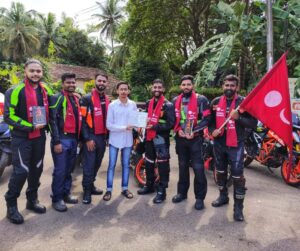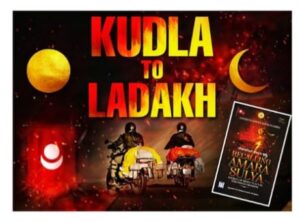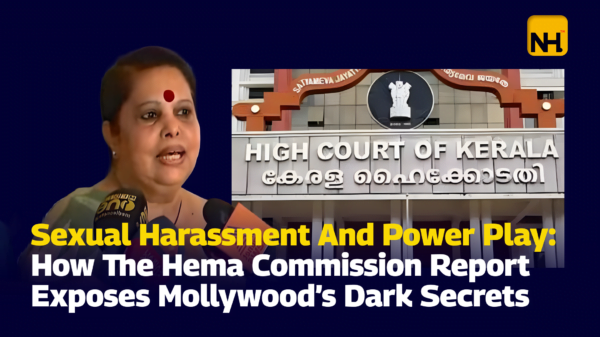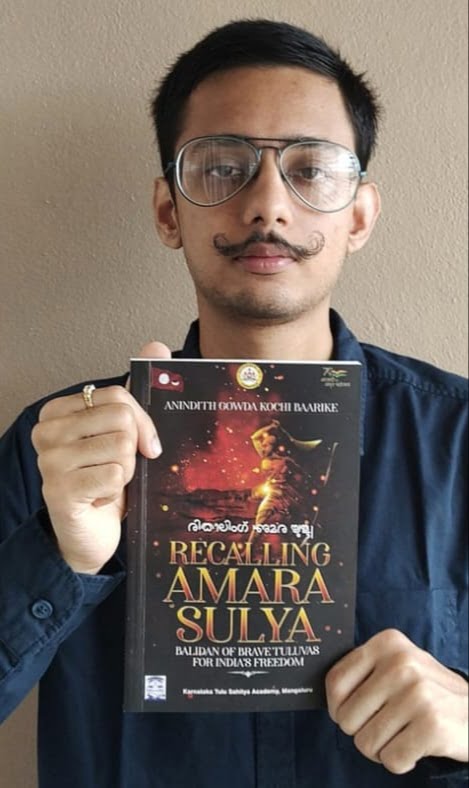WHAT IS AMARA SULYA?
Amara Sulya was the turning point in the Indian Independence Movement which due to ‘circumstances’ was lost to time and also from the larger public memory. Amara Sulya was a Prominent mass freedom movement in 1837 and it was not specific to one caste or territory. It is recalled as the Amara Sulya Freedom Movement of 1837 and this particular movement is a significant episode in India’s Independence Fight against the British, back then the British East India Company. Freedom Fighter Kedambadi Ramaiah Gowda whose statue has been erected by the Government of Karnataka recently at Mangaluru (yet to be inaugurated at the time of writing), was one of the important figures in this uprising. The incident took place in 1837 which was 20 years before the Sepoy mutiny.
A PREVIEW
Generally, when we talk about India’s independence fight or when one googles the broad outlook of the freedom struggle, it is from the period 1857 up to 1947. Until now, 1857 which crops up the name of Martyred Freedom Fighter Mangal Pandey and the Sepoy Mutiny has been remembered for being India’s first fight for freedom. In 1857, a major transition took place. Until then, the British East India Company was abusing Indians in the name of an administration called Company Sarkar (Company Government). The East India Company became so strong that it had their own army! Until 1857, the British East India Company invaded India’s resources and after the Sepoy Mutiny, the British crown took over, bringing an end to the Company’s rule.
REGARDING AMARA SULYA MOVEMENT 1837
Now that we all know that Amara Sulya Incident took place in 1837 which was 20 years before the sepoy mutiny. Amara Sulya also happens to be the name of a place and Sulya as it is shortened to since independence, is a sub-district/Taluk. Sulya is located on the National Highway between Mangaluru & Bengaluru. The British had mentioned Sulya as the “Western Slope of the Western Ghats” and true to that, Sulya is in a sloped region with thick forests. The spelling Sulya is found in British Records and post-independence it is written as “Sullia”. Historically the territory was known as “Amara Sulya “long before the movement of 1837 took place. This name, although not in use in the name of the region, has stuck itself to being the name of the Freedom Movement of 1837 which sparked on its soil.
HOW SULYA WAS TERMED AS “AMARA SULYA”
There were two main reasons behind the term “Amara” Sulya.
Reason – 1
In later Medieval history, the King of Kodagu – Muddu Raja goes and speaks to the Ikkeri Dynasty’s King at the time, Shivappa Nayaka. The Haleri dynasty were relatives of the Keladi dynasty (another name of the Ikkeri Dynasty). Haleri Muddu Raja tells the Ikkeri King Shivappa Nayaka, that he doesn’t have a male heir to his throne. With the worry of continuing the Haleri Dynasty, Muddu Raja had approached Shivaapa Nayaka of Ikkeri. Upon hearing this, Shivappa Nayaka lights a lamp and says that he should have this lamp lit and that it should burn continuously for one year, after which he will be blessed with a male child. The prophecy became true, the Ikkeri king upon listening to it was very happy, and therefore listening to the good news gifted 3 villages of Amara Sulya to the Haleri Dynasty, saying that whatever milk and other necessities are required for the baby should be taken from these three villages. Up to this day, these three villages, although geographically lie at Sulya, belong to Madikeri taluk of Coorg district, administratively. Festivities at Talakaveri temple are complete only with the rice and coconut which comes from these three villages. A ritual that has continued until today! From the word Amritha, Amara came. It’s not an assumption, it’s a fact that’s there in the records and the details of it are present in ‘Recalling Amara Sulya’, the latest book to be published by Karnataka Tulu Sahitya Academy, a Government Agency. This is how the name Amara came into being. Back in its days, the Keladi dynasty was so powerful that they were the first to host the Portuguese ambassador among all Royal families of India of that time! This event took place during the period of Keladi Venkatappa Nayaka of the Ikkeri Dynasty.
- During the Vijayanagara empire, fixed units of land tenures were brought into existence, where if you as a soldier fought or produced an army for the king, the king would give land in exchange for military service. Like benefits today we get from the defence. Amara Sulya back then was a Maagane (A unit comparable to a district or sub-state state).
Centuries after the fall of the Vijayanagara Empire, the way East India Co. carried themselves on a day-to-day basis bugged, hurt, and angered people, so in December 1836 the brave people of Amara Sulya decided to rise against the British. In the town named Bellare (an integral part of Sulya) which has a huge history in the whole of Karnataka. It is said that 500 years ago, the Ballal rulers of Tulunadu had a core base here. Many dynasties including the British have always had a hold on this particular town. The Ballals had one of their core bases at Bellare, so the Kings had to be crowned at Bellare. The Ikkeri Dynasty too during its period had control over Bellare. Later the British came, and they too made Bellare their tax collection office cum Bungalow. That spot today is known as Bangle Gudde meaning Hillock of a Bungalow. The account records of the British, the money collected forcibly from people and their staff were there as if it was like their station. On March 30th, 1837, the people of Sulya stormed Bellare to the British bungalow, snatched all the account paper, burned them, and chased the British as well as their staff away. The money thus recollected was redistributed amongst the people of Amara Sulya. This gave them the spirit of success. On April 3rd, they reached Mangalore’s Lighthouse Hill area at the heart of the city. This side of the city till Kankanady and other end till the Ullal bridge was a European colony settlement where even the German Portuguese had their settlements back then! Along with their cantonments, arms, and officers, this part of the city was a mini-Europe back in 1837.
The freedom fighters came from Bellare with a large number of supporters. An even larger number of people all the way from Sulya to Mangalore joined them and it became a mass movement. The British wrote in their records that they had the whole of India erupted in arms in 1837 and wondered whether they would get freedom. The British were scared because it was one mass support of people.
On 05 April 1837, all who were imprisoned by the East India Co. for petty issues were released, the British were chased, the East India Company flag was lowered at Bavutagudde of Mangaluru (that’s how the name came) and the whole European settlement of Mangaluru up to the Ullal River was burnt by the freedom fighters. As the event took place, two British judges along with their families escaped by climbing a ship coming from Mumbai. As the then DC of Canara was running to catch the same ship, freedom fighters blast ammunition, looking back at the devastation happening makes his thoughts recorded later reveal that he was thinking how and why his administration had failed. It was an absolute nightmare for the British, that they wanted to run, and nothing of the British remained. It was as though India had received freedom. This is how the Amara Sulya Movement became a sign of victory for all Indians and at the same time, an absolute nightmare for all Europeans!
WHY ISN’T ‘AMARA SULYA’ KNOWN MUCH
Two reasons why it was not famous or known as the first freedom fight are:
- The British had put two cases on our freedom fighters who fought in the Amara Sulya Movement. British East India had charged them with an anti-national case! “I was shocked and horrified to learn this. Imagine how freedom fighters must have felt when some bunch of random nobody frames them as traitors of India! while all that they did was fight for defending the soil. Upon all of this as a mark of insult, they were dragged to a military court of the British!” says Anindith Gowda Kochi Baarike, the author of “Recalling Amara Sulya” who happens to be the 6th generation descendant of the Freedom Fighters of the Amara Sulya Freedom Movement of 1837.
- In October 1837, a formal law was passed by the British East India Co. that nobody should ever talk about this incident. If anyone was to be found talking about it, that would be the end of them. The people of India had to behave as if this movement never happened in the first place. This is how the topic was systemically banned by the British, leading to losing its memory. “Till date nobody in the family knows the ultimate end of my great grandfather’s father and his father, whose only memories are that they unitedly refused to pay any amount of money to the Britishers. That’s all that’s known of them, not even whatever happened to their bodies.” says Anindith.
Fast forward 185 years later, opposite to Bellare’s Banglegudde there’s a police station. When elections approach, weapons have to be deposited there. “The soil of Bellare witnessed the first mass movement of people for independence. Today we visit the same soil once every few years as a ritual to deposit our ancestral guns, but 185 years ago, our ancestors came with guns to the same spot to fight for freedom” says Anindith.
HOW THE BOOK WAS TITLED “RECALLING AMARA SULYA”

“03 April 2018 was the time of election season. My father was cleaning our ancestral gun which was to be deposited the next day. At that moment, little did we know that there is much to the Amara Sulya Movement than whatever little was known about it back then. Looking back, it feels as if history was repeating itself somewhere. On the same date, my great grandfather’s father had said that he would have to leave for Bellare town the next day. 181 years later, the same dialogue was said to me by my father, but the context was different. Our ancestors took a gun to fight for freedom, but 181 years later on the same soil, we took the gun to deposit! So many things might have changed but some memories remain truly untouched. This is the first chapter of the book titled ‘Recalling Amara Sulya’ published by the Honorable Karnataka Tulu Sahitya Academy. As an author, my approach in the book is not about being just a descendant or a researcher, but as a young boy of 20 odd years telling the story of exploring in and around one’s home and hometown which ultimately led to this output in the form of a book. Therefore, the title of the book is ‘Recalling Amara Sulya’ “says Anindith Gowda Kochi Baarike
WAS THERE ANY MAIN LEADER?
A GRAND RE-ENTRY AFTER 185 YEARS

The statue which came to Mangalore on 29th August 2022 was of Kedambadi Ramaiah Gowda. He is slowly emerging as a cult in today’s time. Today he is referred as a ‘Sangatan Chathur’ meaning one who is exceptionally skilled in organizing people.
He is a native of the exact base of the western ghats, an extremely rich person of his time. It is said that he had a thousand acres of land, and all his lands were sold off by the British East India Company, after this movement.
He was the one who had called up for a meeting of all the important people and heads of the family in Amara Sulya and decided to teach the British a lesson, he was the one who coordinated and so he was more like a fuel to the fire. Today he is the largest sentimental cult in Sulya. 185 years later, Kedambadi Ramaiah Gowda did come back, but in the form of a statue to Mangaluru. People gathered in huge numbers throughout the Dakshina Kannada District, and he was welcomed very grandly.
As per the British records, he had said that “Even if a dog was to be found in the palace of the king, even that dog would raise an army and command a force against the company government.”
“Sulya should be projected as the land of freedom fighters for its contribution to India’s freedom struggle” says Anindith. Many people showered flowers on the statue and came together without religious or political differences. It was as if Kedambadi Ramaiah Gowda himself came back to Mangalore. Every kid beside the road, all the way up to Mangaluru held the India flag and welcomed him with joy. The Inauguration of the statue is yet to happen.” says Anindith.
SILENT MARCH HELD IN BIKARNAKATTE AND THE STORY BEHIND IT
On 14th August 2022, there was a silent march held at Mangaluru’s Bikarnakatte. Mangaluru South Constituency MLA, the Mayor, public persons and Anindith along with the public took part in the march on that day. After the movement, 5 people were publicly hanged at Bikarnakatte. In solidarity, this silent march was held.
According to the court orders of that time, two of the freedom fighters were ordered to be hanged. Another fighter, Kallianappa whom Ramaiah Gowda had pushed to be the face of the protest, was hanged in public by the British themselves, without informing the court about it!
Nandavara Banga-Arasa, a descendant of a prominent royal family of Tulu Nadu was jailed for showing support to the movement. Pained by this, it is said that he sat for Sallekhana vow which is a means of fasting unto death in Jainism. His mortal remains were dragged from the prison to Bikarnakatte and publicly hanged by the British at the edge of a hillock overlooking the city. This was a psychological tactic played by the British to show the consequence of demanding freedom! If the state of the King was such, then what could be the state of the common man if they revolted against the British! This was the thought of fear seeded by the British East India Co. They were publicly hanged, and their dead bodies were left for the vultures and other animals to feed on. Crimes against humanity were committed in large numbers during and after this movement. The Banga Arasa’s land, Kedambadi land at Sulya, and the land of Kochi (Author Anindith’s paternal ancestry) were auctioned by the British East India Co. after the Amara Sulya incident.
The Silent march that took place on 14th August 2022 was to observe this at the place where they were hung, at Bikarnakatte. The aim being the incident should be remembered by all, especially the younger generation. Anindith’s book cover launch happened at Ramakrishna mutt on 24th August 2022 and the program, in association with Ramakrishna Mutt and Government of India. This took place in the presence of 500 students.
“It’s a continuing history, let me explain how – For many, history is something which happened in the past and that is all to it. But, for me, it is a continuing history. Not just as an author, but as descendants, we continue to live on the same soil. Whenever I go back home, all of this history and public reception is one part, but at the end of the day, we sleep on the same soil which witnessed many events back in time, so for me it’s not history but continuing history. And when someone is around such an opportunity, it is our responsibility to bring a logical conclusion to a traumatic past. We know about the people that went to war, but their bodies never came back. In an independent country, it has to be structured and presented to all. Only if we are aware can we share, therefore I have taken this up as a duty to structure and understand it first. I Could have done research work and would have got a few certificates and some monetary compensation, but I questioned the purpose it would serve had it been sitting in some far-off library catching dust. It is the history of this soil, that is why I decided to publish it in a book so that in the long run, somebody who is genuinely interested to learn more about the topic can just pick up this book and read. This is the idea that pushed me to write the book, by first understanding the intricacies of the topic. It has taken me five years to reach here” says Anindith.
ANINDITH GOWDA KOCHI BAARIKE

Anindith, 22 is the young author of “Recalling Amara Sulya” a book based on surviving British Records, which is published by Karnataka Tulu Sahitya Academy, Government of Karnataka. He completed his bachelor’s in Journalism and Mass Communication from Nitte Institute of Communication, Mangaluru along with this department’s first Undergraduate Student Research Project.
Anindith Gowda Kochi Baarike hails from the Kochi Baarike manor household which held administrative control over parts of Sulya and Puttur until 1834 (annexation into British East India Co.’s territory). The household having a warrior legacy has sent men to defend India. Situated in the periphery of Bellare, where the Amara Sulya Movement met with its first success, the story of this incident was forbidden by law by the British until it’s resurfacing now. His maternal legacy comes into the picture the Koojugodu Kattemane. The household has represented the Palace of the Ikkeri Kings since the 16th century. Freedom Fighter Koojugodu Kattemane Appaiah Gowda belongs to this lineage (6 generations before the author). It is said that in the Amara Sulya Movement, along with his supporters, he had climbed the Bisle Forests on the slope of the Western Ghats with a mission to recapture the Madikeri Fort from the British East India Co. but with the coming of Col. Williamon, the plan was foiled, and the freedom fighters had to make the supreme sacrifice in defending India.
ABOUT THE BOOK – “RECALLING AMARA SULYA”

The Honorable Karnataka Tulu Sahitya Academy is an institution under the Government of Karnataka’s Kannada and Culture Department. It is the publisher of this book. “Recalling Amara Sulya” is the first English book of Karnataka Tulu Sahitya Academy and Anindith’s first book. This book is being translated to Kannada, as there are requests for the Kannada version of this book. The book was released on 24th August 2022.
“Sources are always important, so I was able to successfully contact the British museum and informed them of the matter. After 185 years, I was able to successfully talk to the Britishers. The Conclusion is, that I as a descendant was able to communicate with the British. In 1837 it began with guns and in 2022 it is ending with a pen. Ultimately the younger generation should read, and they know about Amara Sulya.” says Anindith.
Anindith was honored by the Government of Karnataka, on 24th on the day of the release of the book in the presence of Col. Sharath Bhandary and Capt. Ganesh Karnik, who were the guests, along with Popular Orator Sri Shrikanth Shetty Karkala and Karnataka Tulu Sahitya Academy President, Sri Dayananda G. Kathalsar.
Anindith says, “History belongs to all, and I feel a book will make it possible to reach the reading community, rather than it being another research work catching dust in some library. Making it into a book, that too there is a Government logo on it, and this is now a designated state project. During the British period, it was a banned topic and now it is a book that is published. This is another success of the Amara Sulya Movement of 1837. “
BOOK CREATING A NEW RECORD ALREADY!


“Recalling Amara Sulya” is all set to be the latest book that is all set to climb the “Highest Road in the World”. This book is going to enter “Umling La (19,300 feet above sea level)”, which is the Highest Road in the World, situated near the Indo-China Border at Ladakh. A well-experienced team of Motorcycle Riders called “Screw Riders” have organized a rally to raise public awareness regarding the Revolutionary “Amara Sulya” movement. The team is led by Mr. Vineeth B Shetty who hails from Mulki and has travelled solo from Mangalore to Ladakh covering 5,000+ kilometers. Along with him, Mr. Abhishek Shetty, Mr. Vinith Shetty, Mr. Shamoon M., Mr. Deepak Kakera, and Mr. Rovil Almeida, the team members of “Screw Riders” will be accompanied in this rally.

On 17th September, this rally was flagged off from Mangaluru’s Tulu Bhavan at 10 AM. They will follow the route from Udupi -Mumbai-Gujarat-Rajasthan-Haryana-Punjab-Srinagar-Kargil-Leh-Khardung La Pass- Turtuk-Pangong Lake-Sarchu-Manali-Delhi-Hyderabad and then Bengaluru where the rally will culminate on October 2nd.
Mr. Shetty feels this is an excellent chance where they can spread awareness of Tulunadu’s Heroic contribution to India’s independence movement. As he says, “I don’t remember during my school days where there was any mention of this revolutionary incident in any of our textbooks.”





















































































